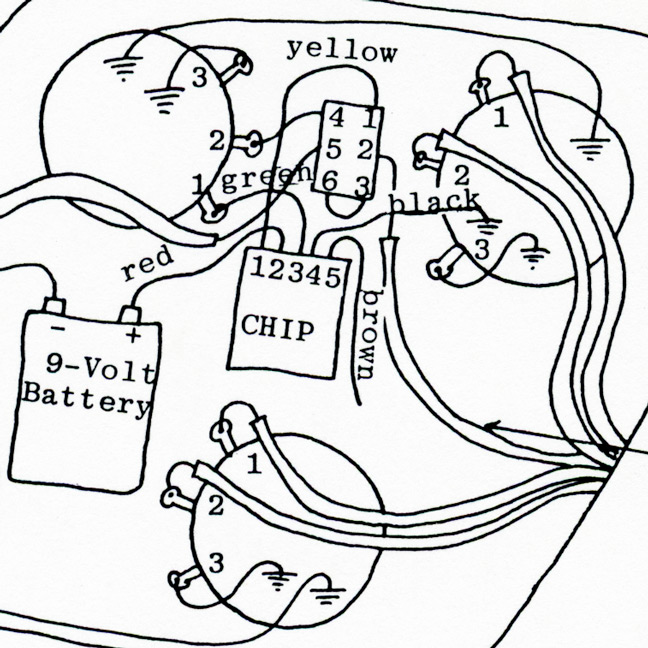
On-Board Preamps
by Bob Meltz
Originally published in Guild of American Luthiers Data Sheet #158, 1980Seeing that I, like other luthiers, enjoy the finer things in life (i.e. food, clothing, shelter), it is always a pleasure to find something that a) provides the luthier with a good return on his investment in time and materials, and b) provides the customer with something useful at a reasonable price. Such is the case with this little tidbit.
It happens that most of my clientele play electric instruments and I have implanted preamps in dozens of these instruments with universally good results. It seems that most electric guitarists playing rock, fusion, or contemporary jazz are endlessly searching for ways to provide them with the sound of small, overdriven tube-type amps. The most common device used to accomplish this is the “distortion box” as made by a number of companies. The disadvantages of this type of device are numerous: a clumsy box sitting on the floor with cords dangling at the feet of the player, added noise from all but the most expensive units, line loss when the effect is bypassed, etc. For all but the people who are looking to totally “raunch out”, the on-board preamp is a viable, indeed preferable, alternative. Although it provides practically no distortion of its own, the added output is enough to overdrive the preamp stage of almost any guitar amp.
Become A Member to Continue Reading This Article
This article is part of our premium web content offered to Guild members. To view this and other web articles, join the Guild of American Luthiers. Members also receive 4 annual issues of American Lutherie and get discounts on products. For details, visit the membership page.If you are already a member, login for access or contact us to setup your account.
